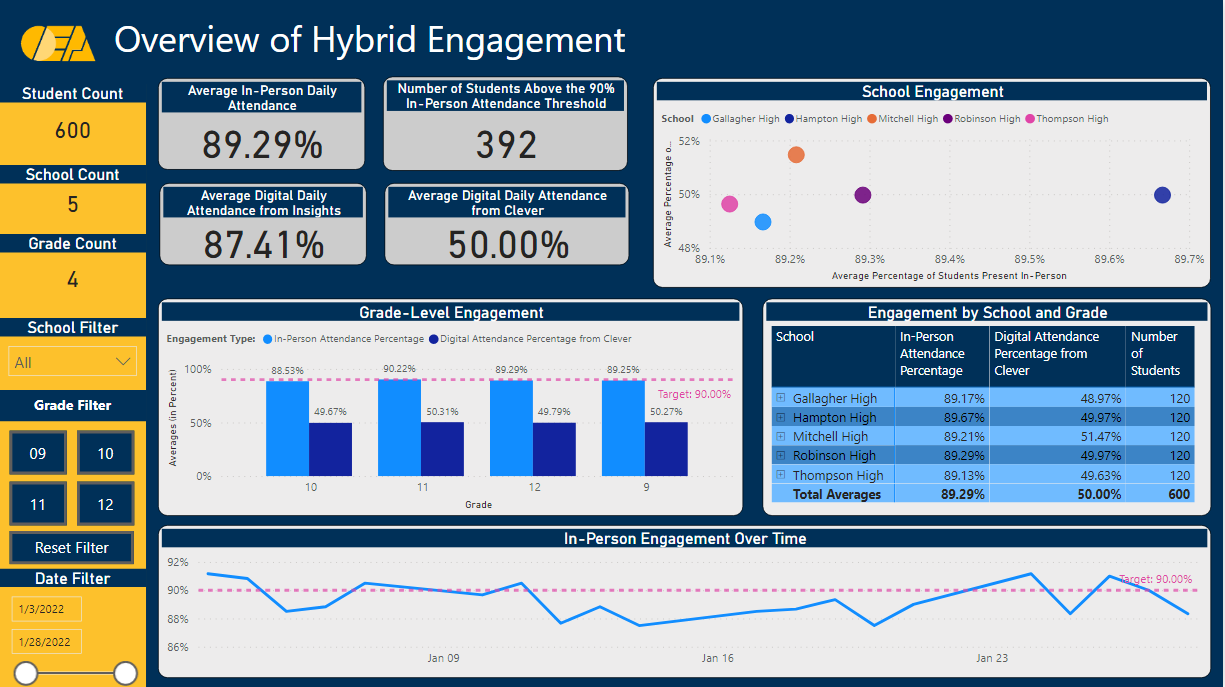-
Fresno Unified School District serves about 71,000 students from preschool through secondary school in California. In general, these students come from economically challenged families, with 88.3% of the district population receiving free or reduced-price lunches at school. The district wanted to embed personalised learning across schools to make sure they were addressing the unique needs of all of their students individually and to develop and nurture a culture of continuous improvement that would benefit their learners throughout their lives.
Many changes are driven by equity. Creativity, collaboration, real-world problem-solving … students who most need these skills to compete in the workforce and to succeed in college are students from disadvantaged backgrounds. Learning analytics, using an equity focus, shows these students gain on both content knowledge and skills competency when teaching practices better prepare students for their AsYetImagined futures.
Philip Neufeld
Executive Officer, Information Technology, Fresno Unified School District
Understanding and sharing what works
Fresno Unified School District’s Personalised Learning Initiative (PLI) encouraged and supported the district’s teachers in the use of digital tools that enhance and accelerate learning experiences for students. Throughout the implementation of this initiative, district leaders wanted to use data to understand its impact in schools. Keeping in mind their dual objectives of providing equal opportunities for all of their students while preparing them for the future that awaits them, the district leadership knew they needed new data signals and multiple, connected sources of data to understand whether every student was making progress. Specifically, they wanted to understand what was working, where it was working, and why. They wanted to be able to identify and share exemplar teaching practices widely throughout the district.

Beginning with the end in mind
Fresno Unified School District started their learning analytics and AI journey with specific questions they wanted to answer with data. They examined their existing data sources and, although their data practices in the district were strong, they knew they needed new measures of learning to augment the more traditional measure and demographic data. The district embedded ethical data practices into their work from the beginning, as at a minimum they needed to follow California data privacy laws. A robust cyber-security infrastructure was developed as well as many policies around data use. District staff at all levels were provided with training on how to avoid data hacks, which are the biggest risk to security in the district.
The district also created rules governing how to share data amongst partners in a way that protected students’ personally identifiable information. Being “good stewards of the data,” as Philip Neufeld says, is about more than just data security practices, however. It involves making careful decisions on how to responsibly share data and combine data form different sources. Most importantly, all parties need to make sure data are being used in a way that promotes all students getting a better education.
Begin with the end in mind, but start where you’re at.
Philip Neufeld
Executive Officer, Information Technology, Fresno Unified School District
Benefit of Open Education Analytics
Through partnering with Microsoft and other countries in Open Education Analytics, new insights and learnings have emerged that have helped Fresno Unified School District progress towards their learning analytics objectives. The process takes time, but they are already seeing real progress. By the end of the second year of PLI, data were beginning to show strong evidence of the initiative’s positive impact on student performance in English language arts and mathematics, as well as increased levels of student’s digital collaboration. School and district leaders were able to understand the variation in outcomes between schools in the district and according to different student characteristics. Furthermore, processes are now in place that enable the district to ask increasingly detailed questions of their data, combining data from varying sources to gain results that inform their decision-making. For example, after the prolonged period of remote learning due to the COVID-19 pandemic in 2020, the school district was able to understand whether the teacher training their staff received through PLI impacted student achievement during the period of remote learning.
What’s next?
Fresno Unified School District recognises that their work is not over: the process of embedding learning analytics and evidence-based decision-making in schools is long. They have some immediate plans to create PowerBI visualizations and share insights within Teams and their ATLAS student information system and they will continue to seek feedback from stakeholders to make sure they are meeting the needs of users. The future journey with learning analytics and AI is still open for the Fresno Unified School District. They still want to understand how rich data can help inform instruction and personalise learning for all students, thus enabling a system of modern learning for everyone.

